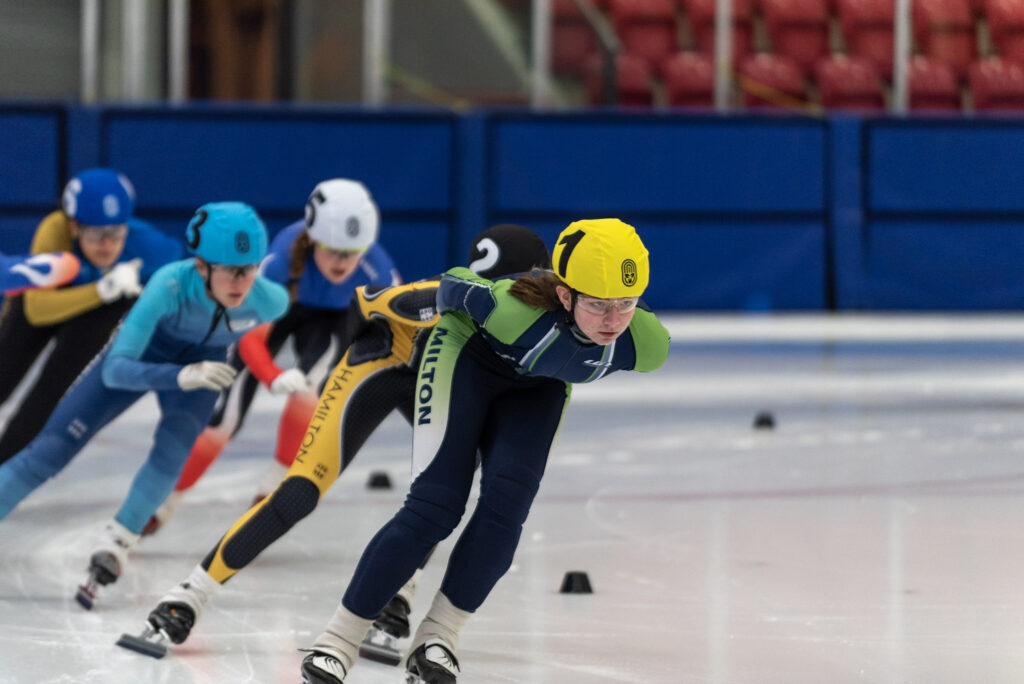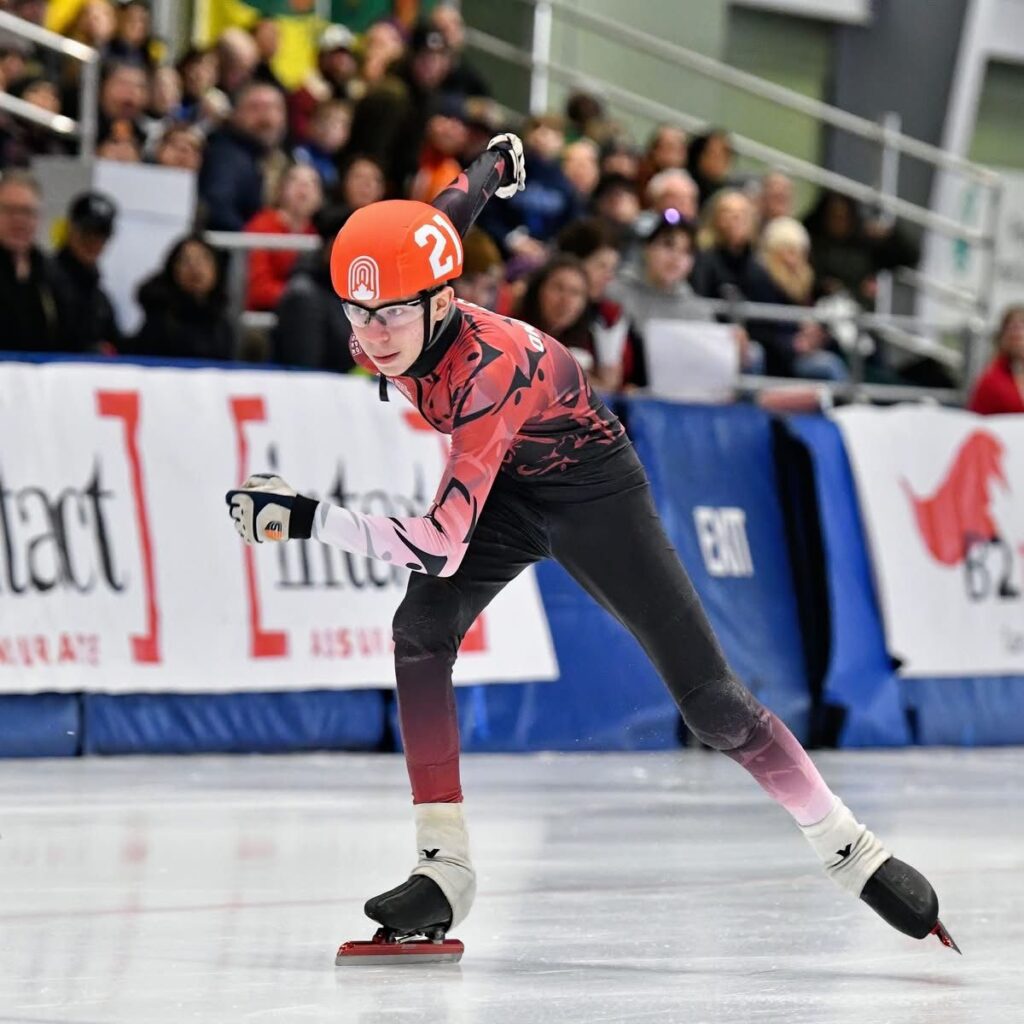Here you can find the following information regarding racing
GENERAL INFO

Ontario Elite Circuit (OEC)
Ontario Provincial Circuit (OPC)
Ontario Regional Racing
For more information about Long Track meets, events, and camps, contact our club’s Race Coordinator.
It should be noted that skaters typically start speed skating with Short Track. If interested in Long Track, we recommend that skaters have speed skating experience and are 11 years of age or older.

1. What to bring
2. Arriving at the meet
3. During the day
4. Warm Ups
5. Helmet Cover
6. Health Card
7. Equipment
8. Final Points
1. What to bring:
2. Arriving at the meet:
3. During the day:
4. Warm Ups:
Note: This is an opportunity for skaters to get “familiar with the ice”, and do an equipment check. It is not a true warm up. Skaters should do a proper off ice warm-up as instructed by the MSSC coach.
5. Helmet Cover:
6. Health Card:
7. Equipment:
In accordance with Speed Skating Canada regulations, D3-100; All competitors must wear:
8. Final Points:
As per our Milton Speed Skating Club Policy Manual, parents and skaters are expected to promote the values of “True Sport”.
Food Recommendations for Racing:
Day Before:
The goal is to eat a comples cabohydrate-rich meal the day before to fill your muscles with glycogen. Starchy foods like whole-wheat pasta, rice, potatoes, beans, broccoli, and grilled chicken offer a carbohyrdate-rich meal that will provide the right fuel for the next day’s event and protein to fuel recovery.
Recommendation is to avoid new foods that might upset your stomach
Day of the meet (Race Day):
Low Fat Carbs such as:
Note: Sweet potatoe fries don’t count, they are high in fat
Low fat proteins
Hydration
Young athletes can stay hydrated by using this equation:
That is how much water they should drink eash day.
Staying hyrdated is especially important on the day of the meet to helf prevent cramps and fatigue.
POST MEET:
The day after (or dinner after) competition, athletes should eat a high protein meal that contains poultry, red meats, fish or legumes.
When you compete, you break down muscle, you need protein to help repair it and make it stronger.
Sample Race Day Menu
Amouts/Volume/Items are intended to be examples only. Adjust Food and amounts based on dietary restrictions, age and weight of the racer
** It is always recommended to choose easy-to-digest foods that you are familiar with **
| Option 1 | Option 2 | Option 3 | |
| Morning (Breakfast before leaving home/hotel) | ▪Whole wheat toast with low fat peanut butter ▪Apple ▪Glass of 1% milk | ▪Whole wheat toast with low fat margarine ▪Scrambled egg ▪Half a banana ▪Glass of 1% milk | ▪Whole wheat/oat cereal with 1% milk ▪Orange |
| After Warmup | ▪Oatmeal blueberry muffin – small or mini (no butter) ▪Half a banana ▪Water 8oz/250ml/1 cup | ▪Trail mix ▪Orange ▪Water 8oz/250ml/1 cup | ▪Granola Bar ▪Banana ▪Water 8oz/250ml/1 cup |
| After 1st Race | ▪Yogurt with berries ▪Whole wheat crackers ▪Water 8oz/250ml/1 cup | ▪Cottage cheese with berries ▪Whole wheat naan ▪Water 8oz/250ml/1 cup | ▪Half a whole wheat bagel with low fat cream cheese ▪Berries ▪Water 8oz/250ml/1 cup |
| After 2nd race | ▪Oatmeal blueberry muffin – small or mini (no butter) ▪Other half of the banana ▪Water 8oz/250ml/1 cup | ▪Trail mix ▪Pear ▪Water 8oz/250ml/1 cup | ▪Apple slices with low fat peanut butter or almond butter ▪Water 8oz/250ml/1 cup |
| After 3rd race (this is typically when there is a longer “lunch” break) | ▪Butternut squash soup (in a thermos) – low fat, no cream ▪Slice of whole wheat bread ▪Milk ▪Berries ▪Water 8oz/250ml/1 cup | ▪Sandwhich on whole wheat break ▪Milk ▪Apple ▪Water 8oz/250ml/1 cup | ▪Hard boiled egg ▪Lean meat (ham/turkey) ▪Whole wheat crackers ▪Milk ▪Grapes ▪Water 8oz/250ml/1 cup |
| After 4th race | ▪Hummus ▪Whole wheat pita bread ▪Orange ▪Water 8oz/250ml/1 cup | ▪Quinoa and sweet potato salad ▪Berries ▪Water 8oz/250ml/1 cup | ▪Sweet potato salad ▪Water 8oz/250ml/1 cup |
| After 5th/last race | ▪Oatmeal blueberry muffin – small or mini (no butter) ▪Berries ▪Water 8oz/250ml/1 cup | ▪Trail mix ▪Grapes ▪Water 8oz/250ml/1 cup | ▪Berries ▪Granola bar ▪Water 8oz/250ml/1 cup |

The Milton Speed Skating Club was formed in 2004 by a dedicated group of individuals who wanted to see children participate in and eventually become competitive in the sport of speed skating. Our club caters to Youth, 5-18 years of age, but will accept older members and has a family rate plan if parents want to skate with their children. We offer speed skating for people located in Milton, Acton, Burlington, Georgetown, Oakville, Mississauga, and Halton Hills.